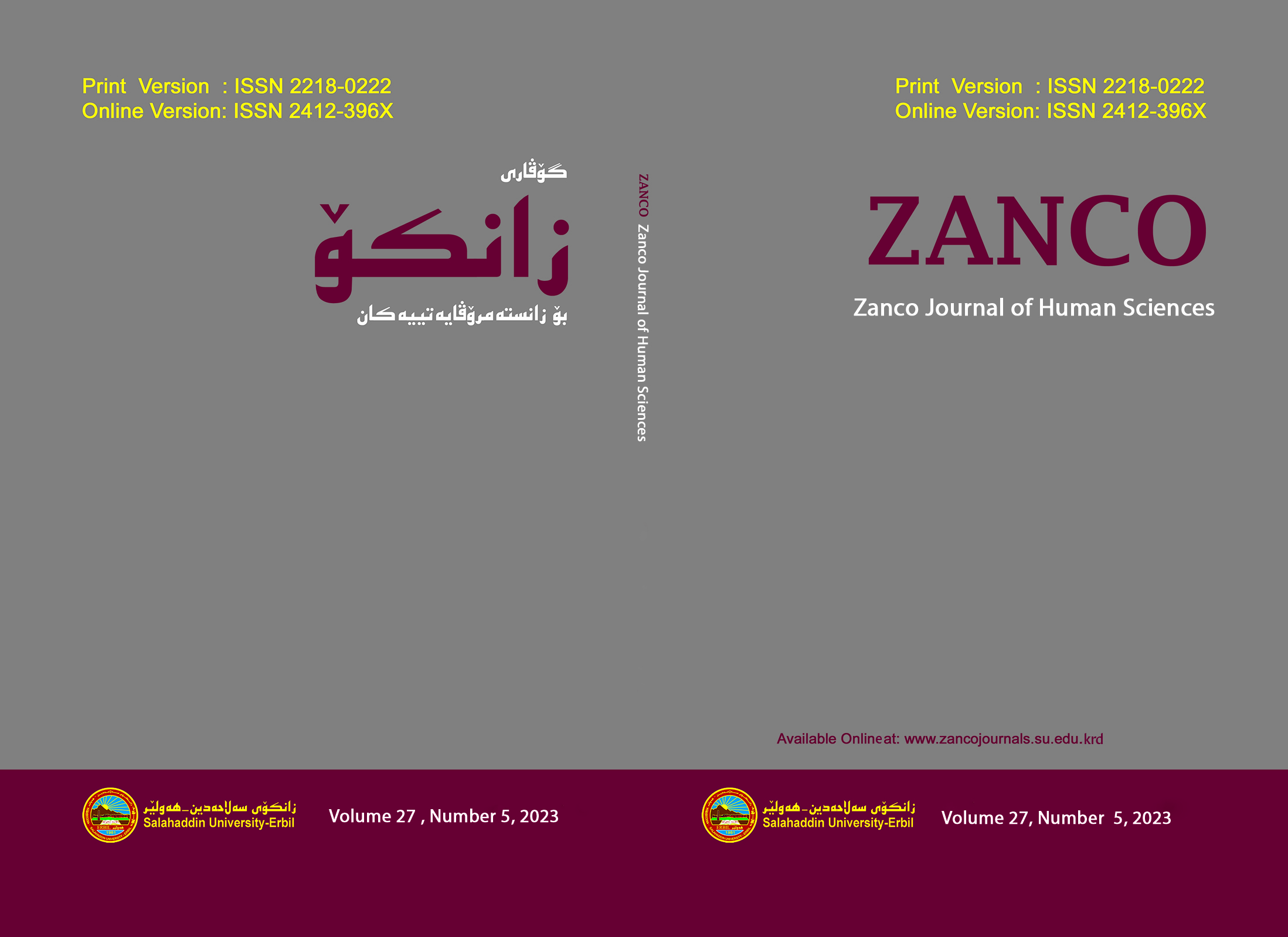Central Kurdish Operators in Role and Reference Grammar
DOI:
https://doi.org/10.21271/zjhs.27.5.19Keywords:
Layered Structure (LS), CKD, Nucleus, Core, Periphery.Abstract
Operator theory constructs one of the key elements of the layered structure of the clause in Role and Reference Grammar. In fact, operators make a closed class of grammatical or functional components which modify different layers of the clause. Respectively, the present operators in every layer comprise their specific sub-layers with a projection different from the structural projection. It should be mentioned that negative and illocutionary force operators are the only universal operators among others. The present paper aims to define and analyze these components in Central Kurdish Dialect (CKD); henceforth, the theoretical framework is presented according to Van Valin (2005) and Pavey (2010). Then, Mukriyani’s examples as one of the sub-dialects of CKD, which are chosen from daily interactions are studied in this frame. It is worth mentioning here that the researchers are native speakers of CKD, and their intuition plays an important role in describing and explaining the results, pointing the most important ones as: CKD’s operators appear around the syntactic structure of Nucleus in two morphological forms of prefix and suffix, which in turn, are presented in three lexical forms of modal verbs, linking verbs and phonologically null morpheme.
References
• Azizi, F. (2019). The Study of the Layered Structure of the Clause in Sorani Simple Sentences according to Role and Reference. Unpublished Ph.D. dissertation, University of Sistan and Balouchestan, Zahedan, Iran.
• Bonami, O. & Samvelian, P. (2008). Sorani Kurdish person markers and the typology of agreement. 13th International Morphology Meeting, Vienna.
• Bohnemeyer, J. & Van Valin Jr., R. D. (2009). The macro-event property and the layered structure of the clause. International Conference on Role and Reference Grammar. Berkeley University.
• Daneshpazhouh, F. (2014). The So Called Passive in Kurdish (Srôanî, Kurmanji). Unpublished Ph.D. dissertation, Payame Noor University, Tehran, Iran.
• Foley, W. A., & Van Valin Jr., R. D. (1984). Functional syntax and universal grammar. Cambridge: Cambridge University Press.
• Haji Mâref, A. (2000). Morphology: fifth volume. Sardam Publication, Sulaymaniya, Iraq.
• Hama-Khurshid, F. (2008). Kurdish language and its dialects, a geographic analysis [Zmani Kurdi u diyalektakani, shikrdnawayaki jugrafyayi]. Sardam publication, Sulaymaniya, Iraq.
• Hengeveld, K. (1990). Layers and operators in functional grammar. Journal of Linguistics 25: 127-157.
• Kareem, R. (2016). The Syntax of Verbal Inflection in Central Kurdish. Ph. D. dissertation. Newcastle University.
• Kurdief, K. K. (1984). Kurdish Grammar in Kurmanji & Sorani Dialect. Translated into Kurdish by Kurdestan Mukriyani, Nishtiman Publication, Bagdad, Iraq.
• Kurdish Scientific Academy (2011). Kurdish Speech Grammar. Second publication, Erbil, Iraq.
• Matasović, R. (2017). Agreement in Role and Reference Grammar: A Typology of Possible Targets. Izvorni znanstveni ćlanak, Prihvaćeno za tisak, 5, pp: 157-171.
• Moradi, E. (2017). The Study of Prepostional Phrases in Kurdish language (Hawshāri Sorāni Dialect) Based on Nanosyntax. Unpublished Ph.D. dissertation, University of Sistan and Balouchestan, Zahedan, Iran.
• Nabaz, J. (1976). The Uniform Kurdish Language. Bamberg, Germany.
• Olson, Michael L. (1981). Barai clause junctures: toward a functional theory of interclausal relations. Unpublished Ph. D. dissertation, Australian National University.
• Pavey, E. L. (2010). The Structure of Language. An Introduction to Grammatical Analysis. Cambridge University Press.
• Thackston, W. M. (2013). Sorani Kurdish. A Reference Grammar with Selected Readings. Harvard: Iranian Studies at Harvard University.
• Van Valin Jr., R. D. (2005). Exploring the Syntax-Semantics Interface. Cambridge: Cambridge University Press.
• Van Valin Jr., R. D. (1990). Layered Syntax in Role and Reference Grammar. In Nuyts, J., Bolkestein, A. M., & Vet, C. (Eds.), Layers and Levels of Representation in Language Theory: 193-231. John Benjamins Publishing Company.
• Van Valin Jr., R. D. & Lapolla R. J. (1997). Syntax: Structure, Meaning and Function. Cambridge: Cambridge University Press.
• Veysi Hesar, R. (2014). Tense and Aspect in Mukriyani Dialect. Journal of Research in Western Iranian Languages and Dialects 8:101-124.
Downloads
Published
How to Cite
Issue
Section
License
Copyright (c) 2023 Farzad Azizi, Payman Rezvani

This work is licensed under a Creative Commons Attribution-NonCommercial-ShareAlike 4.0 International License.
Except where otherwise noted, content on this site is licenced
under a Creative Commons Attribution License 4.0 (CC BY- 4.0)










